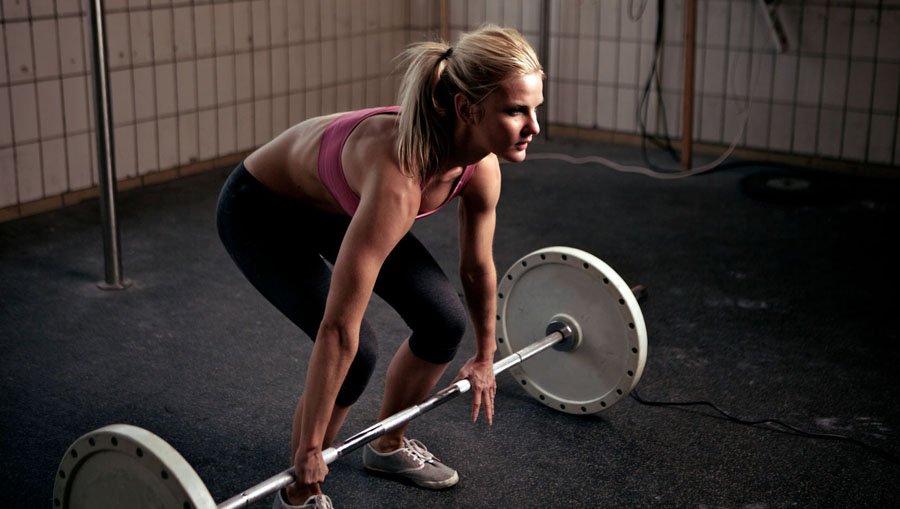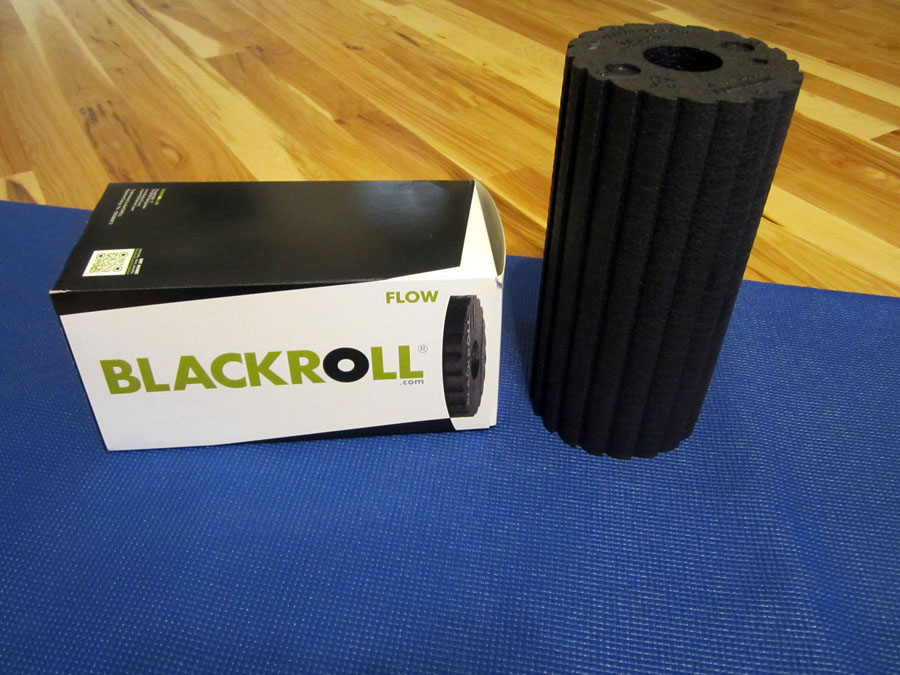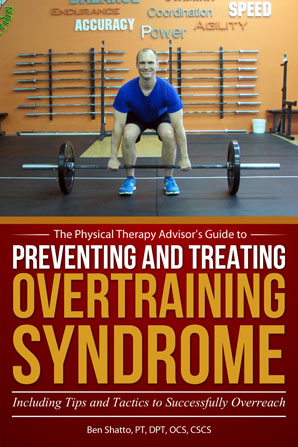Injury is often associated with Overtraining Syndrome (OTS) or a direct result of it. Overtraining can occur when the intensity and/or volume of exercise becomes too much for the body to properly recover from. Many common training injuries are directly associated with OTS. It’s always best to prevent OTS rather than attempt to recover from it. OTS usually starts with muscle soreness and a feeling of fatigue. Then it quickly progresses into a case of Overtraining Syndrome or injury.
Warning signs include:
- Fatigue (mild to severe)
- Muscle and body achiness and soreness
- A sudden drop in performance
- A drop in strength
- A drop in cardiovascular endurance
- Insomnia or excessive sleepiness
- Illness due to a drop in your immune function
- Irritability and moodiness
- Depression and a loss of enthusiasm for activities (such as training)
Proper recovery is critical to avoiding injury and OTS. Every recovery protocol should include a multifaceted approach that incorporates strategies to positively affect the muscular, nervous, and hormonal systems. This includes proper nutrition, getting adequate sleep, cross training, and implementing self-care modalities (such as mobility band use and foam roller use).
Focus on your Recovery Nutrition
Your body’s ability to train harder and recover faster is not just about the exercises performed. It should also be centered on the fuel you put in your body. Your body cannot perform optimally, recover adequately or heal from injury properly without adequate nutrition.
The majority of your diet should be from real food. My personal belief is that food which is minimally processed, organic and/or home grown is likely to have a higher nutrient load and will therefore be healthier for you. Your body simply cannot heal and recover quickly or adequately when substandard fuel “food” is consumed.

I am a believer in supplements although you must choose wisely. Your dietary belief system, genetics, and the type of exercise and/or activity (such as running) that you mainly participate in will determine which supplements may work best for you.
When choosing supplements, I tend to gravitate toward supplements that can enhance performance, improve recovery, stabilize blood sugar, and reduce systemic inflammation. The ultimate goal with supplements is to aid your body in improving health and/or performance. Try to choose the most natural products as possible and experiment to see what works best for you. Look for supplements that don’t contain extra fillers, sweeteners or additives.
Get Adequate Sleep
On average, we need six to eight hours of sleep each day. The harder you train, the more rest you need to insure proper recovery. As you approach a state of overtraining, sleep quality tends to decline. Consider napping daily. Many of the country’s top collegiate athletic centers are adding special napping or quiet rooms to their large training centers as more and more trainers realize sleep is critical for recovery.
Hard and prolonged training can deplete one’s body of much needed minerals and macro nutrients. Most of us are deficient in the amount of magnesium we consume on a regular basis. Magnesium is a critical nutrient that not only helps to reduce muscle soreness, but also helps you to get a better night of rest. I choose to take a magnesium supplement nightly before bed. Mag Glycinate in its oral form is the most highly absorbable. Otherwise, eat foods, such as spinach, artichokes, and dates, which are higher in magnesium.
Cross Training
Regardless of your sport or athletic endeavor of choice, cross training is an important component in preventing injury and promoting recovery. Implement cross training in your typical training cycles as a method to limit your risk of injury. Cross training can also make your training more enjoyable as it keeps your body stimulated and ready for improvement.

Cross training can also be the perfect time to spot train your weak areas. Work on your mobility and balance as a prevention technique for areas that are prone to injury. If you have a history of low back pain or a prior knee injury, utilize this time to single out all those weak areas in an effort to prevent injury in the future.
Actively Manage your Aches and Pains
Be proactive when you start to feel those aches and pains creep up by initiating a self-treatment protocol right away. It’s always easier to prevent an injury from occurring rather than treating one.

Use a foam roller after exercise in order to speed up your recovery time and decrease the risk of muscle soreness or restriction. Learn how to self-mobilize by using treatment techniques including mobility bands and cupping. Don’t underestimate the value of a stretching session or practicing yoga. You may also consider seeing a masseuse for regular body work.
Overtraining Syndrome can be dangerous and severely limit your ability to train. It also significantly increases your risk of injury. Nothing can derail your best laid training plans and goals like an injury or suffering from OTS! If you develop OTS, you will need to take specific steps to speed up your recovery in order to prevent injury and return to a normal training schedule.

AVAILABLE NOW ON AMAZON!
In my book, Preventing and Treating Overtraining Syndrome, I show you how to recognize the risk factors and symptoms of OTS. You’ll learn how to utilize prevention strategies to help you develop a personal training strategy that will allow you to push past your limits and prior plateau points in order to reach a state of what is known as overreaching (your body’s ability to “supercompensate”). This will speed up your results, so that you can train harder and more effectively than ever before! In addition, learn how to use the foam roller (complete with photos and detailed exercise descriptions) as part of a health optimization program, recovery program, rest day or treatment modality.
Discover how you can continue to train hard and avoid the associated poor performance, illness, and injury that can result in lost training days and opportunity!
